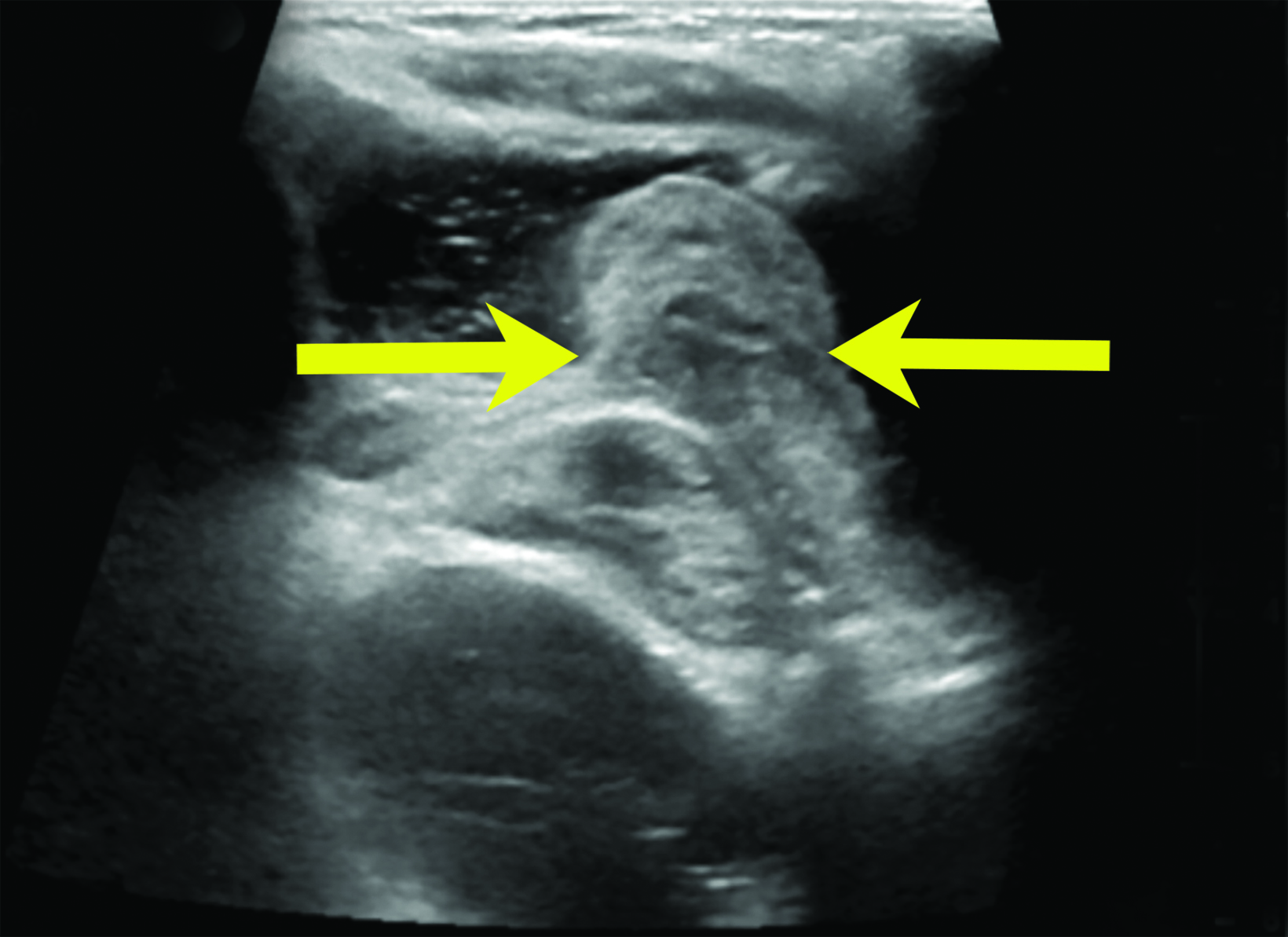Ileo-colic Intussusception
Images



Case Summary
A toddler presented to the emergency department after passing a bloody, mucousy bowel movement subsequent to sharp abdominal pain that started the prior evening. Ultrasound was concerning for intussusception.
Imaging Findings
Abdominal ultrasound examination demonstrated a rounded, mass-like opacity with a bowel-in-bowel configuration, located in the right upper quadrant, indicating an ileo-colic intussusception (Figure 1).
Diagnosis
Ileo-colic intussusception
Discussion
Intussusception is defined as the invagination of one bowel segment into an immediately adjacent segment, with idiopathic ileo-colic intussusception more common in children.1 The incidence of intussusception ranges from 1 to 4 per 2000 infants and children.2 Patients typically present with signs and symptoms such as lethargy, abdominal pain, nausea, vomiting, failure to pass stool, diarrhea, and/or bloody stool.
Intussusceptions are among the most common causes of bowel obstruction in children aged 3 months to 6 years.3 Treatment can take the form of surgical or nonsurgical approaches; the latter can be further divided into hydrostatic reduction or pneumatic reduction methods.
While a reduction can be performed in the fluoroscopy suite utilizing water-soluble contrast or air, this method exposes the child to ionizing radiation. Hydrostatic reduction can be performed under ultrasound guidance, requiring no ionizing radiation (Figure 3). As ultrasound is often the first-line modality for diagnosing intussusception the diagnosis and treatment also can be performed wholly within the ultrasound suite.4
Conclusion
Intussusceptions are the most common causes of bowel obstruction in younger children. Once an intussusception is diagnosed by ultrasound, hydrostatic reduction can be attempted under ultrasound guidance, obviating the need for contrast-based procedures, which expose the patient to ionizing radiation.
References
- Marsicovetere P, Ivatury S, White B, et al. Intestinal intussusception: etiology, diagnosis, and treatment. Clin Colon Rectal Surg. 2017 Feb; 30(1):30-39.
- Khorana J, Singhavejsakul J, Ukarapol N, et al. Enema reduction of intussusception: the success rate of hydrostatic and pneumatic reduction. Ther Clin Risk Manag. 2015; 11:1837-1842.
- Gurunluoglu K, Tasci A, Bag H, et al. The effects of hydrostatic reduction and operative manual reduction on the success of intussusception reduction. Annals of Medical Research. 2018; 25(3) 476-480.
- Khong P, Peh W, Lam C, et al. Ultrasound-guided hydrostatic reduction of childhood intussusception: techniques and demonstration. Radiographics. 2000. https://doi.org/10.1148/radiographics.20.5.g00see11.
Citation
JK L, E D, O M. Ileo-colic Intussusception. Appl Radiol. 2022;(6):48A-48C.
November 2, 2022